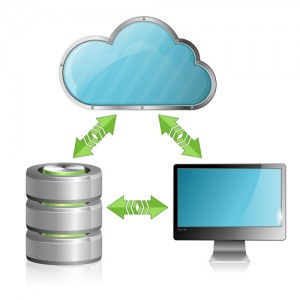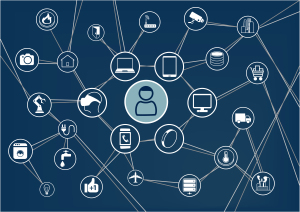SIP Trunking or Hosted PBX: Telephony Planning for a Growing Business
 Every growing enterprise faces choices about the best telephony solution to meet its needs. Session Initiation Protocol (SIP) trunking or a hosted private branch exchange (PBX) are both viable solutions, but a business must determine which is more suited to its particular requirements.
Every growing enterprise faces choices about the best telephony solution to meet its needs. Session Initiation Protocol (SIP) trunking or a hosted private branch exchange (PBX) are both viable solutions, but a business must determine which is more suited to its particular requirements.
Exploring the Similarities and Differences Between SIP Trunking and Hosted PBX
At first glance, SIP trunking and hosted PBX seem very similar. Both are IP-based systems and offer the same basic services such as:
• streaming audio and video;
• VoIP telephone connections to include local, long distance, and toll-free lines;
• support of both mobile and fixed phone systems; and
• support of data transmission for email, fax, text messages, and Internet access.
However, one of the primary differences between the two is that a SIP trunking system requires fixed assets and support, whereas hosted PBX does not.
Hosted PBX is generally a service provided by a vendor that requires neither an investment in equipment nor staff to oversee the system. This is a lower cost solution, but it is completely dependent on a third party for the operation of a vital business asset.
A SIP trunking solution requires an initial investment in expensive equipment and infrastructure as well as the ongoing cost of maintenance and service professionals. But despite these costs, this investment can lead to long-term flexibility and room for growth.
Size Matters
Smaller businesses will often benefit more from hosted PBX. Essentially an all-in-one telecommunications provider, the hosted PBX vendor delivers a hands-free telephone system that meets a small business’s needs without the cost of equipment and dedicated staff. Additionally, because hosted PBX is cloud-based, a small business has the option to switch providers without any significant interruption of service.
But as a business grows, it often needs much greater use of bandwidth and therefore requires more resources. A hosted PBX service can be expanded to compensate for the greater needs of a larger business, but this is usually accomplished at a higher cost. Eventually, there comes a point in a business’s growth when it becomes more efficient to opt for a SIP trunking solution.
A larger business with a SIP Trunking solution is able to manage its critical telecommunications system in-house and does not have to rely on an external supplier. This affords the business a level of self-reliance and allows for more overall bandwidth as well as room for growth.
Looking Ahead
Ultimately, it seems that both SIP trunking and hosted PBX systems have a future in enterprise telephony. Both systems are well suited to a particular clientele and have enough overlap in customer base to allow for healthy competition. Choosing between SIP trunking or hosted PBX is a matter of analyzing a business’s current and long-term needs.
Why BaaS Is Becoming Tomorrow’s Standard in Data Storage
 Using the cloud for secure Backup as a Service (BaaS) data storage is rapidly becoming a quality that potential clients look for when evaluating business partners. In a high energy business environment with ever increasing dependency on information and data storage, the consequences of data loss can be catastrophic.
Using the cloud for secure Backup as a Service (BaaS) data storage is rapidly becoming a quality that potential clients look for when evaluating business partners. In a high energy business environment with ever increasing dependency on information and data storage, the consequences of data loss can be catastrophic.
How It Works
Online backup systems operate by using agent software to compress designated data files, folders, and drives, then encapsulate the compressed data in encrypted packets and transmit them to an off-site facility where the data is stored.
The initial backup can be time consuming, but in subsequent sessions backup systems save bandwidth and time by using algorithms to scan the selected folders and drives and focus only on data files that have been added or changed since the last update.
In-House Backup Difficulties
Backing up data is nothing new in the business world. Traditionally it has been a function performed as time allowed by IT professionals within the company, and the data was stored on location. There are a number of drawbacks to this method. Three of the more prevalent are:
- cost of IT personnel,
- cost of equipment, and
- potential for total data loss.
Online backup systems provide viable solutions via the cloud to each of these persistent problems with in-house data backup.
Labor Savings
Once the agent software has been installed, the company’s IT professionals need only designate the material to be backed up and schedule a recurring time window for the backup to take place. After that, the process becomes automatic. No further active participation is needed on the part of employees. The result is less manpower and less labor cost.
Infrastructure Savings
The savings in equipment cost is immediately obvious. Eliminating the need to purchase, keep, and continuously update data storage equipment translates to a great deal of savings even after the cost of the online backup is taken into account.
Reduced Risk of Total Loss
One of the more often overlooked advantages of online backup is the reduction of total data loss risk. When data is backed up and kept on location, the original data and the backed up data are both at risk if the building is somehow destroyed. If the backup data is stored off-site, as is the case with an online backup system, the destruction of the business building does not mean that all of the business’s vital data is forever gone.
Looking Forward to BaaS and the Cloud
Any enterprise that does business over many years will learn that suffering data loss is inevitable. The deciding factor between data loss being a mere inconvenience or a serious financial disaster will depend on how well prepared a company is for the problem.
It should be noted that as the business field of play changes, the cloud becomes more essential in daily operations. Businesses that fail to adapt to the ever increasing influence of the cloud will find themselves left behind. Existing and prospective clients are becoming more conscious of whom they do business with. In increasing numbers, potential businesses are looking at survivability when choosing their partners.
The Ever-Evolving VoIP
 The birth cry of the Internet came about in the U.S. when the Advanced Research Projects Agency Network (ARPANET) delivered the first data packet between two computers in 1969. That very same ARPANET saw the birth of Voice over Internet Protocol (VoIP) when the first data packet of encoded voice was transmitted in 1974. In recent years, the dawning and proliferation of the information age has seen VoIP truly come into its own.
The birth cry of the Internet came about in the U.S. when the Advanced Research Projects Agency Network (ARPANET) delivered the first data packet between two computers in 1969. That very same ARPANET saw the birth of Voice over Internet Protocol (VoIP) when the first data packet of encoded voice was transmitted in 1974. In recent years, the dawning and proliferation of the information age has seen VoIP truly come into its own.
An Innovation in the Data World
From businesses to the home internet connection, relatively inexpensive high speed internet is allowing VoIP to replace traditional telephone services. In all but the most remote rural areas, sufficient internet speeds are now available, prompting consumers to question the need for both telephone and internet services when internet will serve both voice and data functions.
Affordability and Convenience
In the past there has been resistance to innovations such as VoIP due to cost and the dread of having to get a new telephone number. That is no longer the case. VoIP equipment is highly affordable and often is less costly than even an average smartphone. Further, the cost of transmitting a data packet over long distance is hardly more than the cost to send the same data packet across the room, making VoIP more affordable than traditional long distance telephone services.
In the early days, a VoIP call had to go through a third party because telecommunications companies held a certain level of propriety over the connections. Now, VoIP calls go directly to the recipient, bypassing the middleman and keeping costs low.
Changes in FCC laws now allow phone numbers to be transferred from one service to another. The process of making the change takes just moments, and the service provider is usually happy to do the work in order to get new business. The service itself is has yearly costs comparable to regular monthly cellular phone charges.
Services That Are Part of the Package
Most VoIP packages include long distance as just another service provided for a very low single fee if not provided entirely for free. A number of services once considered to be extras were billed as such but are now being provided by VoIP as a standard package. Some of these standard services provided at little to no additional cost include call forwarding, voicemail, and call waiting.
Marrying VoIP to Apps
VoIP is IP-based and highly adaptable with regard to data handling applications. As a result, VoIP telephony systems are capable of previously unheard of functions and new applications are arriving on the scene every day. From screen sharing to faxing to email, the IP-based world is growing and expanding in capabilities at a mind-boggling rate. With the affordability of VoIP services being realized, what was once thought to be a tool for businesses has taken root in the home.
Weighing the Pros and Cons of the Cloud
 Getting involved with the cloud is a popular proposition when looking at acquiring new technology. A company should consider how cloud technology relates to the business as well as current regulations before moving to the cloud.
Getting involved with the cloud is a popular proposition when looking at acquiring new technology. A company should consider how cloud technology relates to the business as well as current regulations before moving to the cloud.
Understand the Benefits of the Cloud
Businesses should first consider how a move to the cloud can be beneficial. Customer Relationship Management (CRM) tools, for example, enable employees to view customer interactions so that technicians, sales staff, and customer service agents are aware of how other employees interacted with a customer at certain intervals. Management can also more easily monitor employees from a single dashboard. These actions are difficult to replicate outside of a cloud service.
Understand Any Potential Negatives
Preparations should be made to understand what migration to the cloud will entail as well as what could potentially go wrong. For example, pieces of confidential customer data may be collected and stored in the cloud and will require protection. Confidential company data such as product costs and internal reports will exist in this tool as well, so internal security is also a consideration.
Other factors that should be investigated when searching for a cloud provider include the potential for customer data to be lost or compromised if the system is hacked as well as the actions a company would need to take if the cloud provider suffered a major outage.
Understand Cloud Provider Services
It is important to investigate what a cloud provider does to protect its clients. Pull data from the cloud provider from time to time so that backups are in place in the event that the relationship with the cloud provider ends or the provider takes much longer than the service agreement allows to resolve technical issues when they occur. If data can’t be exported easily from the beginning, that should be a red flag.
There is a lot of good that can come from the cloud. Capital expenses can be reduced or even eliminated and employees will be able to access their data in a variety of ways, among many other benefits. But it is important that a business makes preparations to transition to the cloud so that the company does not experience any pains while growing into the technology.
Strategic Planning for Information Security: An Imperative for Tomorrow’s Businesses
 In the world of information security, keeping up with the constantly evolving threats to an organization’s sensitive information is akin to trying to hit a moving target. Rapidly growing and changing technologies inevitably bring about new security risks and vulnerabilities and present information security with a never-ending series of challenges.
In the world of information security, keeping up with the constantly evolving threats to an organization’s sensitive information is akin to trying to hit a moving target. Rapidly growing and changing technologies inevitably bring about new security risks and vulnerabilities and present information security with a never-ending series of challenges.
Many organizations find that increasing security challenges come hand in hand with increasing costs. It is a vicious cycle that causes frustration and may necessitate a balancing act between security and profitability. A well-balanced information security strategic plan can greatly impact the cost effectiveness of an organization’s information security.
An information security strategic plan gives an organization a clear advantage by ensuring that everyone is on the same team and on the same page. When all the members of an organization know, understand, and follow the plan, the organization can:
- take measures to avoid security breaches;
- rapidly react to infractions so as to minimize damage and loss; and
- lay out infrastructure to support long-term security to accompany growth.
A Defensive Strategy
Well-funded attackers are always in a state of adaptation as they probe security measures for weaknesses, evaluate the results, and revise their strategies. If ignored, they will eventually find the weak spots in any defense. For this reason, it is imperative that cyber defenders and security specialists have a strategy in place to take proactive measures to be aware of hacking trends, watch for emerging discoveries of weaknesses, and anticipate potential exploitation of new technologies and operation platforms.
An Action Strategy
When an attack occurs, even the best static defenses can be circumvented given time. A well-planned strategy for active dynamic defenses allows an organization to implement contingency measures which will isolate the security breach and lock down vulnerable information assets. When a security breach occurs, there is no time to circle the wagons and discuss what to do. Time lost can mean information lost. An adequate information security strategic plan allows for rapid, effective responses to attacks.
A Progressive Strategy
Planning for future information security is a process based on anticipating the needs of an organization’s information system architecture in comparison with developing security systems and adversarial trends. A clear and concise vision of where an organization intends to go allows for the organization’s security measures to be provisioned and implemented with a minimum of unwanted duplication and waste. Knowing what is down the road allows an organization to seek out and build relationships with information security providers who can meet the organization’s future needs in a timely and efficient manner.
Beyond the walls of an organization, an information security strategic plan provides positive visibility within an industry or enterprise. Existing and prospective customers appreciate the reassurance that comes with knowing their business partners treat their information with utmost confidentiality and safeguard it against theft.
Build a Customer-Centric IT Team
 IT personnel are an integral part of businesses and are instrumental in making sure processes run smoothly by monitoring and ensuring the health of the company’s networks and applications. Until recently, IT professionals primarily performed an internal role, providing services to employees but having little to do with external, customer-facing assignments.
IT personnel are an integral part of businesses and are instrumental in making sure processes run smoothly by monitoring and ensuring the health of the company’s networks and applications. Until recently, IT professionals primarily performed an internal role, providing services to employees but having little to do with external, customer-facing assignments.
However, that dynamic is changing. As network functions become more integrated with customer-service functions, companies must ensure their IT teams are ready and able to provide customer-facing IT functions. Attracting and retaining IT personnel who can deliver both the critical internal IT service and the customer-facing services necessary in today’s environment can offer a competitive advantage.
Break Away From the Typical IT Mold
When looking for IT personnel who will work well in customer-facing processes, consider candidates who deviate from the typical IT stereotype. IT personnel tend to be introverted and more comfortable working with code than with people.
When identifying internal or external candidates for customer-focused IT roles, seek a different personality type than the typical IT employee. Consider candidates with different skills and personalities that can expand the IT team’s capabilities. Outgoing, passionate, socially focused people will typically function better in customer-centric roles than quiet, shy individuals.
To identify and attract such candidates, examine hiring processes and develop a strategy for meeting the company’s core customer-service requirements. It’s important to show candidates how their contributions will be valued and offer flexibility and opportunities to grow and advance.
Offer Customer-Focused Opportunities
Many IT departments have adopted systems that streamline interactions with the IT department but also tend to eliminate interpersonal interactions that are critical in customer-focused processes.
In order to regain customer-facing skills, companies can offer opportunities for internal IT employees to interact with customers. This might mean visiting customer operations or shadowing customer-facing employees. In addition to sharpening customer-service skills, such opportunities can help IT staff better understand customer needs, requirements, and the relation to the company’s IT systems.
Address Company Culture
While attracting and training customer-focused employees is important, making sure the company’s culture and reputation reflects strong customer-centric values is also critical. Potential candidates are likely to be attracted to companies that are stable, innovative, and willing to take risks. Clearly demonstrating how employee contributions affect customers can motivate candidates to become a part of the team.
Customer-service values should not just be presented to outside candidates but be embraced by internal IT teams, contractors, and business partners. Emphasize the value of both the internal and external customer as well as the critical role the IT team plays in both areas.
Finding, hiring, training, and retaining IT personnel capable of providing traditional internal IT services and customer-facing interactions is a likely key to success. For a successful and long-term fit, companies must not only find the right candidate for the job, but also demonstrate why they should want to be part of the company.
SIP Trunking: A Compelling Choice for Improved Collaboration
 Traditional voice services have had their heyday. Today, developing technology trends are shaping a new future for business communications. Automation, the Internet, mobility, cloud, and more are triggering shifts in new services that meet changing customer demands. Session Initiation Protocol (SIP) Trunking is emerging as not just an option but a compelling choice for the modern business.
Traditional voice services have had their heyday. Today, developing technology trends are shaping a new future for business communications. Automation, the Internet, mobility, cloud, and more are triggering shifts in new services that meet changing customer demands. Session Initiation Protocol (SIP) Trunking is emerging as not just an option but a compelling choice for the modern business.
Focusing on the benefits
Even as voice converges with text, image, video, desktop, mobility, and social media technologies, many network administrators still fear the unknown. Their priority is to maximize and protect their investment so it’s understandable that many proceed with caution. However, in order to steer their business forward, network managers should consider what could go right.
For instance, SIP Trunking has many benefits if best practices are observed.
- Savings. In an SIP environment, IT managers start realizing savings when they phase out costly infrastructure. SIP Trunking eliminates Primary Rate Interface (PRI) and Integrated Services Digital Network (ISDN) rentals. Businesses can also save costs by using centralized public switched telephone network (PSTN) access. This can eliminate costs for maintenance, operations, and unused services.
- Scalability. SIP eliminates the problem of having too many channels when they are not needed and too few channels when more are needed. It can be scaled up or down on a per-channel basis to suit specific business needs. It also enables businesses to add trunks as demand dictates.
- Flexibility. As a Unified Communications (UC) package, SIP offers significant flexibility with an array of collaborative options. End-users can enjoy web, voice, video conferencing, instant messaging, chat, voice traffic re-routing, and mobility options.
- Reliable disaster recovery. Security and recovery can be major fears. SIP Trunking features reside in the IP provider’s network in multiple sites, not in the customer’s premises. Should a disaster occur, businesses are assured of timely disaster recovery (DR) and business continuity. This allows calls to be redirected to locations not affected by the disaster, ensuring a recipient for each incoming call.
Hurdling the obstacles
While SIP is a versatile technology, moving to an SIP model has its own challenges. The most common one is interoperability issues. Different vendors interpret SIP specifications differently. This can create complications when integrating legacy systems with the SIP provider network. A good provider should re-evaluate the customer’s existing architecture and suggest modifications that can support the new services.
Bandwidth capability is an important consideration for SIP connection. Bandwidth determines the quality of calls. The wrong amount of Internet bandwidth and such issues as latency, packet loss, and jitter can result in echoes, garbled messages, and call disruptions.
Connecting to the Internet exposes any network to security threats. Brute force and Denial of Service (DoS) attacks are common issues that can cause entire networks to crash. Solid firewalls, session border controllers, and other security devices can help ward off such attacks.
For IT executives, transitioning to SIP Trunking is a critical decision. Decision-makers should consider an SIP deployment that can support present business needs and easily adapt to unforeseen collaboration services well into the future.
Internet of Things: How Telecoms Can Adjust to Meet New Data Realities
 The rapid development of the Internet of Things (IoT) has left many companies scrambling, trying to adapt to the explosive volumes of data that just weren’t predicted (or even imagined) 5-10 years ago. Infrastructures that were designed with maximum anticipated load usage back then simply aren’t prepared to meet growing IoT demands.
The rapid development of the Internet of Things (IoT) has left many companies scrambling, trying to adapt to the explosive volumes of data that just weren’t predicted (or even imagined) 5-10 years ago. Infrastructures that were designed with maximum anticipated load usage back then simply aren’t prepared to meet growing IoT demands.
In fact, many experts now speculate that by the year 2020 there will be more than 50 million connected devices forming the Internet of Things. And although that amount may seem staggering, with constant innovation taking place in the form of wearable mobile technology and smart everything—from cars to coffee pots—that number may end up looking like a mere drop in the ocean.
This situation is especially relevant for network operators in the telecom industry. Surging amounts of data coming in and the various new ways that business users need to analyze and access that information is placing a huge strain on systems. And typically, call centers are valiantly trying to cope with massive CDRs (call data records) from increased device connectivity and usage requirements.
Advantages of Adaptation
A major advantage to the Internet of Things is the capacity to analyze vast quantities of data in relation to patterns and other actionable information. However, this necessitates being able to store huge volumes of historical data for lengthy times frames.
And if database infrastructure and analytics are adapted appropriately, the competitive advantages include a host of customer service improvements such as:
- The inclusion of value-added and customized services through enhanced analytics
- Isolating patterns in archived CDRs to identify service issues and allow alterations in network configurations designed to eliminate them
- Identifying the similarities in usage patterns and service tickets to develop new offers and targeted marketing plans
Strategies for Adaptation
Adapting to the sheer volume of data engendered by the Internet of Things involves strategic planning. Employing innovative approaches to data analytical infrastructure design will help to position telecoms, and their service providers, with the flexibility necessary to meet current and upcoming IoT challenges.
A traditional approach would involve investing in a monolithic relational database, but this type of solution is little more than a temporary fix. Specialized technologies such as cloud-based ad-hoc analytics and real-time investigative database structures (like RAID) offer functional solutions for the hefty network loads present with the IoT. Being able to mine large quantities of records quickly and efficiently will allow operators to identify and react to network issues swiftly, as well as troubleshoot possible situations on an ad-hoc basis.
Possible network issues include:
- Problems with various factors captured in call records such as voice, video, or data transmissions
- Performance functionality of certain device types, operating systems, browsers, or applications
- Communication technology, i.e 4G, LTE
Thinking about database infrastructure and analytics in new ways will help telecoms adapt to the incredible opportunities created by the Internet of Things.
VoIP vs PBX: The Benefits and Disadvantages
 With more available options for communications, many businesses are looking at what service they should use for their telephone line: a more traditional Private Branch Exchange (PBX) or the newer Voice over IP (VoIP).
With more available options for communications, many businesses are looking at what service they should use for their telephone line: a more traditional Private Branch Exchange (PBX) or the newer Voice over IP (VoIP).
Both services have their advantages and disadvantages, including cost and reliability. PBX may be an easier option for internal employees, because it allows businesses to connect all their internal phone lines to a single leased external phone line. In most cases, this means that employees would only need to dial an extension number rather than dialing the full number to call a coworker.
VoIP, on the other hand, uses the Internet to make phone calls by transferring audio information as digital data. It possesses many of the same benefits as a PBX, but it has a lower cost. However, there are also some disadvantages to a VoIP system, leading some businesses to consider an IP PBX system, a combination of the two.
Cost
For large businesses or those that are geographically dispersed, cost may be the single biggest factor in whether to choose PBX or VoIP.
Using a PBX system comes with a monthly charge that can fluctuate depending on how many phone calls are made. In addition, whether or not these calls are made internationally can increase the price. However, VoIP systems use the company’s broadband connection to place phone calls, meaning that the majority of the calls are free no matter where in the world the person is calling. Another benefit of VoIP is a low initial cost; instead of an entirely new system, businesses only need to purchase phone adapters that will change their system from analogue to digital.
Reliability
While cost is lower for VoIP, its reliability can sometimes come into question when compared with a PBX system. Because VoIP relies on the company’s Internet connection, loss of power or connection means that phones will also be unavailable. In contrast, PBX systems are powered by the telephone wire itself and will still work even if the power is out. Some businesses are looking into an IP PBX system for this reason: The ease and cost of a VoIP system with a few PBX lines is ideal for emergencies.
Quality
The company’s Internet connection will also affect the quality of phone calls made over VoIP. Small companies with slow or low-capacity Internet will find that voice quality is lower than with PBX. Fortunately, there are many features in a VoIP system—such as the ability to access a work phone number no matter a person’s physical location—that will encourage businesses to upgrade to a more robust Internet connection.
IT professionals and business leaders should have a good understanding of the pros and cons of VoIP and PBX before deciding which one to purchase. While cost is lower for VoIP, PBX has the advantage in reliability and will still work even without power or an Internet connection. However, with the speed with which today’s digital world moves, businesses may find that VoIP allows them the mobility to keep up – with PBX lines as a backup.
Three Cloud Choices for Enterprises
 With the growing popularity and use of cloud services, IT administrators continue to face the choice of whether to maintain their network operations in house, or outsource operations to a third party. There are pros and cons to each approach.
With the growing popularity and use of cloud services, IT administrators continue to face the choice of whether to maintain their network operations in house, or outsource operations to a third party. There are pros and cons to each approach.
Administrators must carefully evaluate a company’s needs and requirements to determine if a cloud solution makes sense. Not all cloud services are created equal. When deciding among Public, Private, and Hybrid cloud solutions, cost, capabilities, and security needs should be considered.
Public Cloud
Public cloud offerings are affordable, flexible and easy to access but offer less stringent security capabilities. Security is top of mind for network administrators, who have likely taken notice of recent high-profile data breaches.
Public cloud solutions create an additional point of risk by allowing employees to access information from the cloud from potentially insecure networks. Such breaches cause IT administrators to be cautious about the security risks associated with entrusting sensitive to data to servers they don’t control.
Private Cloud
Private cloud offerings, on the other hand, allow enterprises to maintain a certain level of control of data resources. This control allows enterprises to ensure critical company data is kept secure. Other benefits include the ability to control costs. A careful evaluation of the company’s security position is also crucial to determine what data, if any, can be transported and used via a public cloud, and which must remain within the private network.
Private Cloud solutions also provide the ability to customize and optimize services to fit the enterprise’s specific needs. However, private networks sometimes have limited data access, due to fewer interfaces with existing systems. In addition, private networks require in-house support and maintenance, which costs money and personnel resources.
Hybrid Cloud
Hybrid cloud solutions are a relatively new offering that can give enterprises the benefits of both public and private approaches by allowing enterprises to offload some resources to the public cloud while maintaining control over others. In particular, enterprises may be attracted to the limitless capacity of the public cloud and the ability to buy into that capacity as needed.
With a hybrid solution, companies can take advantage of those benefits, while still selecting which mission-critical data it must keep within the private network in order to protect that data from breaches. While adoption rates are still low for hybrid solutions, research shows an increasing level of interest in such services among enterprises, driven in part by a market that values the ability to customize IT solutions.
Choose Wisely and Succeed
Ultimately, each enterprise must carefully consider current and future needs when selecting a cloud solution. Once these evaluations are made, the company will be in the best possible position to determine which cloud solution best meets needs and requirements.
